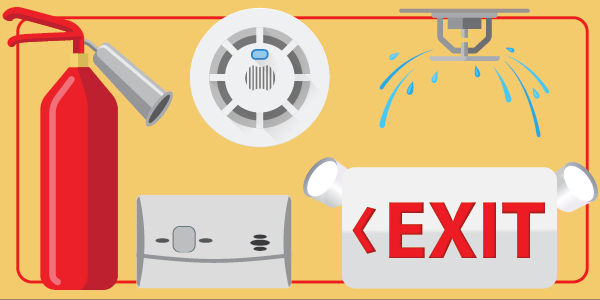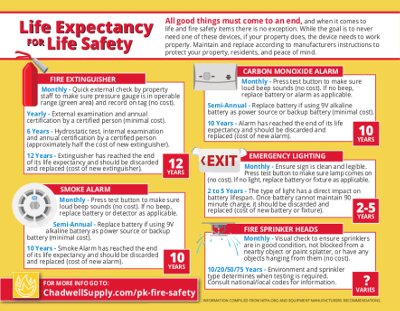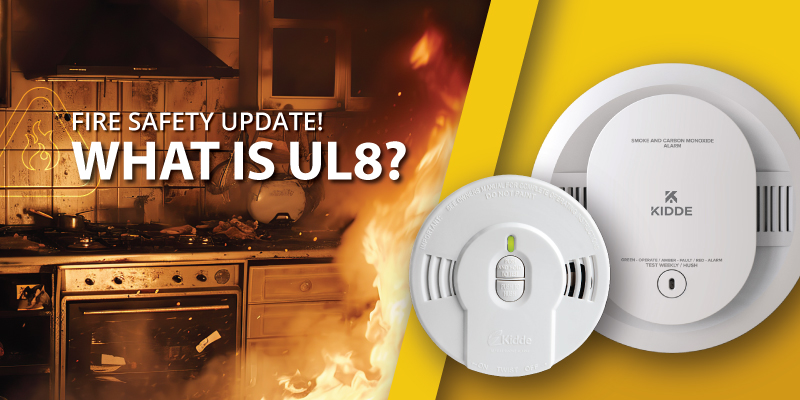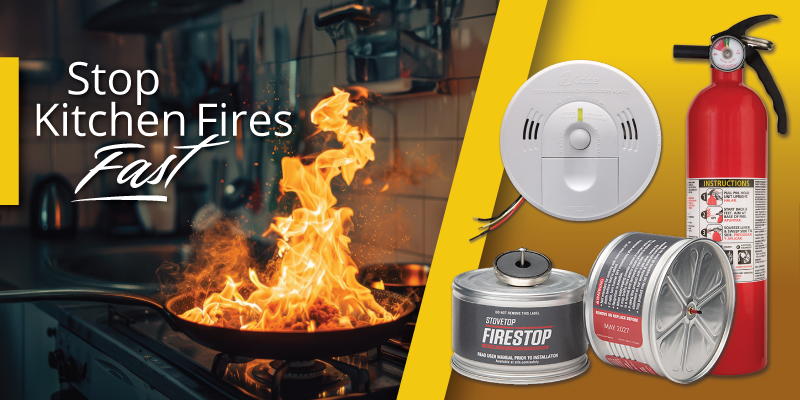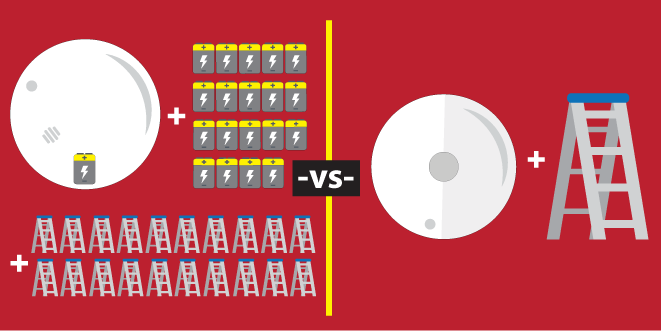Life Expectancy for Fire Safety Equipment
All good things must come to an end. When it comes to life and fire safety items, there is no exception. While the goal is to never need one of these devices, if your property does encounter a fire emergency, the device needs to work properly. It is important, and often required by law, that you test, maintain and replace fire safety equipment according to the manufacturer’s instructions. Putting a consistent maintenance plan in place will protect your multifamily property and give you and your residents peace of mind.
The information below, explained in video by Chadwell University trainers Vann Flippen and Randy Munson, and outlined on this downloadable guide, will help you establish a timeline and a consistent process for managing fire and life safety equipment on your property.
Smoke Alarms
Monthly - Press the test button to make sure loud beep sounds (no cost). If no beep, replace the battery or detector as applicable.
Semi-Annually - Replace the battery if using 9V alkaline battery as a power source or backup battery (minimal cost).
10 Years - Smoke Alarm has reached the end of its life expectancy and should be discarded and replaced (cost of new alarm).
To select the right alarms and to maintain them correctly over the life of the alarm, it is important to understand why manufacturers call for replacement after ten years and which technology and battery options are right for your property.
Fire Extinguishers
Monthly - Quick external check by property staff to make sure pressure gauge is in operable range (green area) and record on tag (no cost).
Yearly - External examination and annual certification by a certified person (minimal cost).
6 Years - Hydrostatic test, internal examination and annual certification by a certified person
(approximately half the cost of new extinguisher).
12 Years - Extinguisher has reached the end of its life expectancy and should be discarded and replaced (cost of new extinguisher).
Carbon Monoxide Alarms
Monthly - Press test button to make sure loud beep sounds (no cost). If no beep, replace battery or alarm as applicable.
Semi-Annually - Replace battery if using 9V alkaline battery as power source or backup battery (minimal cost).
10 Years - Alarm has reached the end of its life expectancy and should be discarded and replaced (cost of new alarm).
Emergency Lighting
Monthly - Ensure sign is clean and legible. Press test button to make sure lamp comes on (no cost). If no light, replace battery or fixture as applicable.
2 to 5 Years - The type of light has a direct impact on battery lifespan. Once battery cannot maintain 90 minute charge, it should be discarded and replaced (cost of new battery or fixture).
Fire Sprinkler Heads
Monthly - Visual check to ensure sprinklers are in good condition, not blocked from a nearby object or paint splatter, or have any objects hanging from them (no cost).
10/20/50/75 Years - Environment and sprinkler type determines when testing is required. Consult national/local codes for information.

